tree-of-heaven (Ailanthus altissima)
Simaroubaceae, the quassia family
How to recognize tree-of-heaven. This fast-growing tree has alternately arranged pinnately compound leaves that are large, long, and adorned with a great many leaflets.

Tree-of-heaven leaves are large, pinnately compound, and have many leaflets.
Tree-of-heaven looks rather like black walnut. One clue you’ve got for Ailanthus is visible at the bases of the leaflets, where there are, on each side, a gland-tipped tooth.
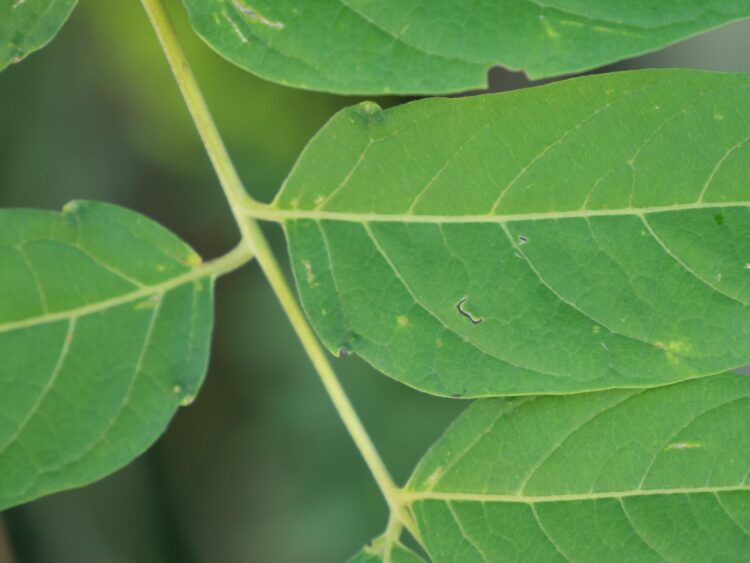
Gland-tipped teeth at the base of leaflets.
Flowers and fruits. Tree-of-heaven flowers are small and greenish, presented in loosed much-branched clusters at or near the stem tips.
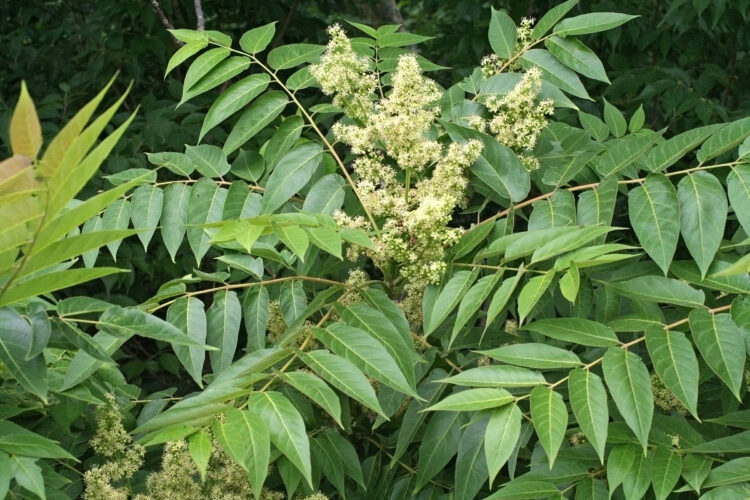
Tree-of-heaven flowering. June 11, 2006.
The flowers, according to technical manuals, can be staminate (male), pistillate (female) or perfect (with both stamens and a pistil). The flower below is perfect, showing, in its center, 5 carpels united at the upper portions only.
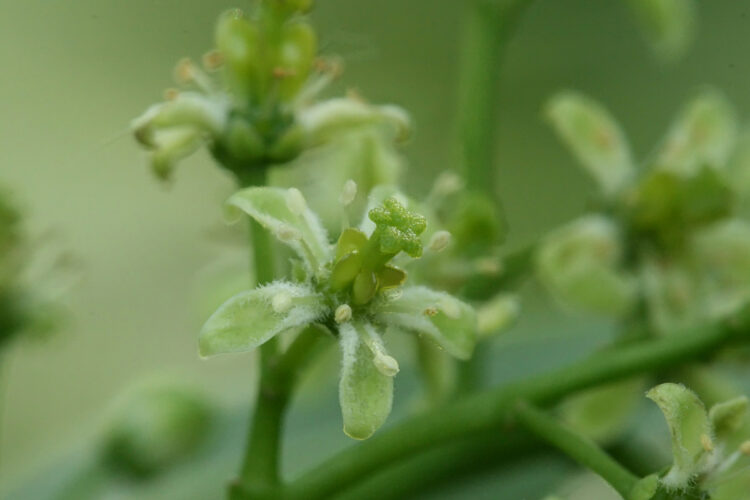
Tree-of-heaven flower.
Each carpel contains a single ovule, evident in the photo below of immature fruits.
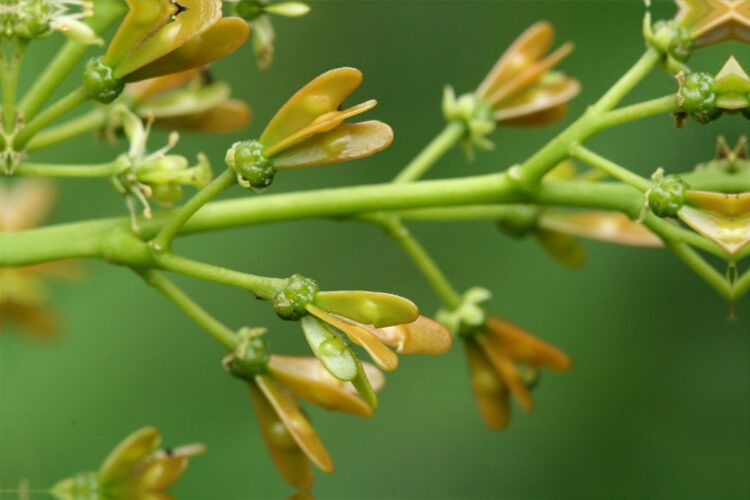
Tree-of-heaven young fruits. June 11, 2006.
The fruits of tree-of-heaven are single-seeded winged affairs, called “samaras.” They are mature in autumn.
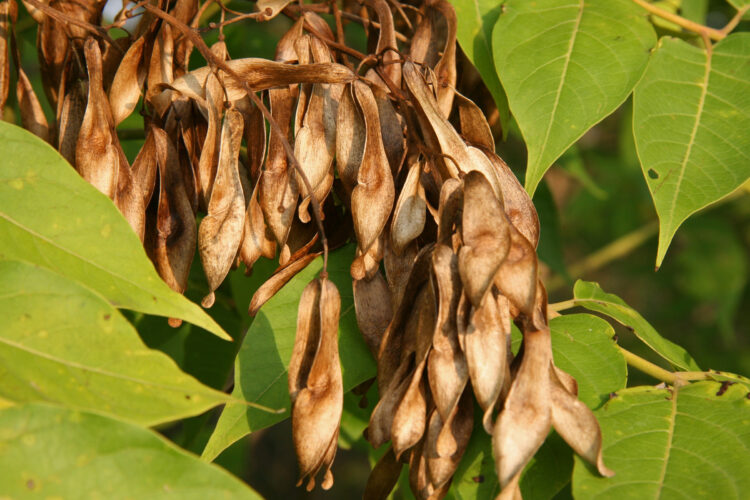
Tree-of-heaven fruits are twisted samaras. October 17, 2007.
In the winter. Tree-of-heaven twigs are stout, with a false terminal bud (note the tip scar). The leaf scars are large, alternately arranged, with about a dozen well-defined bundle scars within. Scratch and sniff: they have a rank aroma that’s been likened to rancid peanut butter. Yuck!
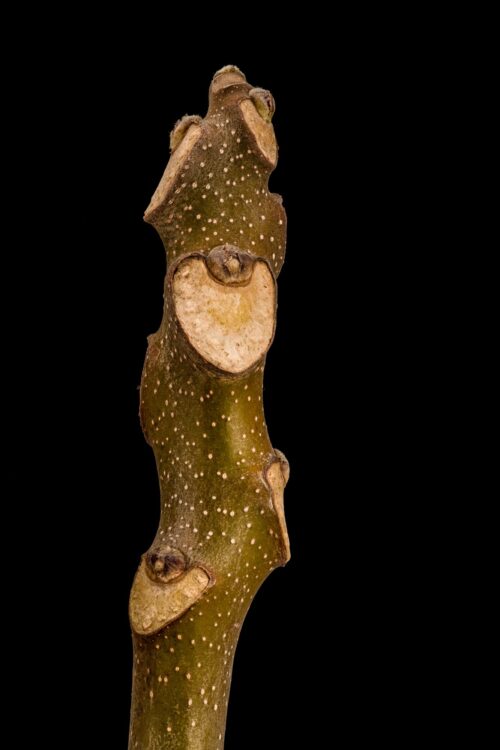
Tree-of-heaven twigs are stout, with large shield-shaped leaf scars.
Where to find tree-of-heaven. E. Lucy Braun, in The Woody Plants of Ohio (1961, 1989; The Ohio State University Press) tells us it is “commonly planted and spreading from root-shoots and seeds, now often naturalized.”
Scanned Image from an Old Book
(Flora of West Virginia, by P.D. Strausbaugh and Earl L. Core)
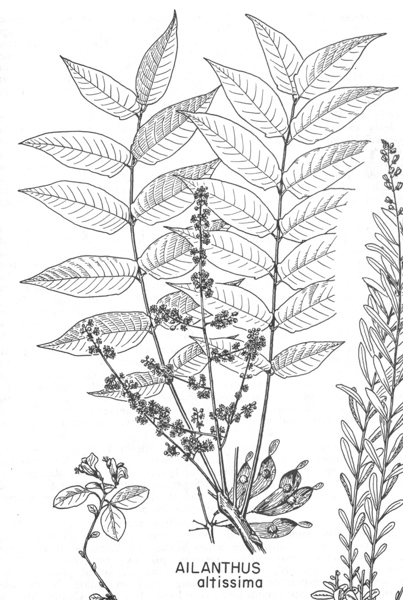
Ooh ooh. I have a question!
I just cut down a bunch of tree-of-heavens (trees-of-heaven?), and really don’t want them to grow back. Do I need to spray herbicide on the stumps?
Oh my, I’m sorry to have to tell you this, but unlike other woody invasives, cut Ailanthus will just laugh at you and send up suckers from its root system even if you herbcided the stumps. To properly eliminate TOH, you need to kill the trees first by using a “basal bark” treatment. This involves applying a concentrated (20%) solution of triclopyr (Garlon) mixed in basal oil to the base of the trees. After a couple months, if the trees are clearly dead dead dead, then you can cut them down. Better luck next time!
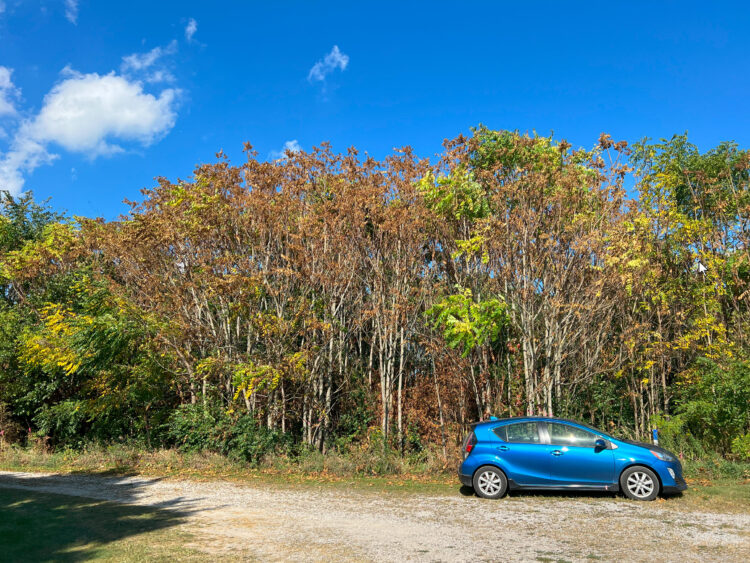
Looking a little sad, tree-of-heaven!
